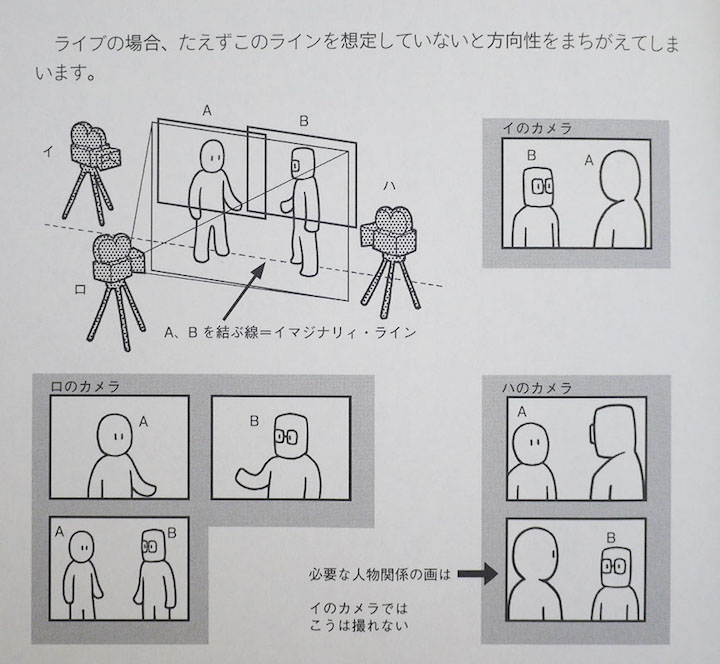アニメを観る目が変わる?一冊! 『映像の原則 改訂版』〜レジェンド本を学ぶ

「レジェンド本を学ぶ」は、さまざまな分野のレジェンドクリエイターたちが執筆した本を通し、作品の作り方や表現方法について学ぶことで、イラストや漫画やアニメといった創作をより深く広く楽しんでいただくための企画です。これからご紹介する名著の数々が、読者のみなさんの作品を見る目や作る腕を養うきっかけになればと思っています。
記念すべき第一回目に紹介するのは、富野由悠季監督の『映像の原則 改訂版』です。
富野由悠季監督は、現在まで続いているテレビアニメ「ガンダム」シリーズの初作品『機動戦士ガンダム』(1979)の監督として知られています。また、日本初のテレビアニメ『鉄腕アトム』(1963)のアニメ脚本・演出を手掛けた、日本アニメ界を代表するレジェンドのひとり。
そんな富野監督の著書『映像の原則 改訂版』は、映像業界を目指す人々に向けて書かれたもの。そのため、アニメだけに限らず実写やCG、ゲームムービーにも応用できる映像制作のプロレベルの内容となっています。
一方、道具の名前や使い方といった具体的な制作方法ではなく「映像の理論」について書かれているものなので、実際に制作はしなくても、映画やアニメといった映像作品が好きという人も、興味深く読むことができるはずです。
たとえば、映像作品を見ていて「いきなり登場人物が誰だかわからなくなった」「理由はわからないけど、映像に違和感を覚える」といった経験はないでしょうか。『映像の原則』を読めば、その理由がわかるようになるかもしれません。さらに、お気に入りの作品については、いいところがよりクリアに見えてくることでしょう。
富野由悠季監督は、現在まで続いているテレビアニメ「ガンダム」シリーズの初作品『機動戦士ガンダム』(1979)の監督として知られています。また、日本初のテレビアニメ『鉄腕アトム』(1963)のアニメ脚本・演出を手掛けた、日本アニメ界を代表するレジェンドのひとり。
そんな富野監督の著書『映像の原則 改訂版』は、映像業界を目指す人々に向けて書かれたもの。そのため、アニメだけに限らず実写やCG、ゲームムービーにも応用できる映像制作のプロレベルの内容となっています。
一方、道具の名前や使い方といった具体的な制作方法ではなく「映像の理論」について書かれているものなので、実際に制作はしなくても、映画やアニメといった映像作品が好きという人も、興味深く読むことができるはずです。
たとえば、映像作品を見ていて「いきなり登場人物が誰だかわからなくなった」「理由はわからないけど、映像に違和感を覚える」といった経験はないでしょうか。『映像の原則』を読めば、その理由がわかるようになるかもしれません。さらに、お気に入りの作品については、いいところがよりクリアに見えてくることでしょう。
文:いしじまえいわ
映像の原則とは映像の「お作法」のこと
そもそもタイトルの「映像の原則」とはいったい何を指すのでしょうか。本書のなかでは「映像のダイナミズム」という言葉で説明されていますが、つまりは映像の「お作法」のようなものです。
日本語には文法や書き方のルールがあるし、音楽には五線譜や音階というものがあります。「お作法」にのっとっていない言葉や音楽は、自分には素晴らしく思えても、周りの人には何をやっているのか伝わらず、多くの場合美しくも面白くもありません。
そして映像にも同じように、「お作法」があるわけです。
本書ではそんな映像の「お作法」として、「映像のテンポとリズム」「上手と下手」「サイズ」「モンタージュ論」など、映像に関するさまざまな原則を解説していますが、今回は、そのなかから「イマジナリィ・ライン」という概念を紹介したいと思います。
日本語には文法や書き方のルールがあるし、音楽には五線譜や音階というものがあります。「お作法」にのっとっていない言葉や音楽は、自分には素晴らしく思えても、周りの人には何をやっているのか伝わらず、多くの場合美しくも面白くもありません。
そして映像にも同じように、「お作法」があるわけです。
本書ではそんな映像の「お作法」として、「映像のテンポとリズム」「上手と下手」「サイズ」「モンタージュ論」など、映像に関するさまざまな原則を解説していますが、今回は、そのなかから「イマジナリィ・ライン」という概念を紹介したいと思います。
「イマジナリィ・ライン」がアニメの人気を左右する
「イマジナリィ・ライン」は、実写でもアニメでも、映像に関する学校であればほぼ必ずといっていいほど授業で取り上げるメジャーな概念のひとつです。「イマジナリィ・ライン」の概念について、富野監督は本書のなかで、
と説明しています。ちょっと具体的に考えてみましょう。
例えば、向かい合っているふたりの人物(左側にA、右側にBとします)がいるとき、AとBを結んで、さらにお互いの後方にずっと伸ばした線を想像してみてください。それが「イマジナリィ・ライン」です。
このふたりが登場する映像を撮る場合、連続するシーン(映像業界ではカットと言います)では「イマジナリィ・ライン」の反対側から撮ってはいけない、という決まりがあります。
例えば、向かい合っているふたりの人物(左側にA、右側にBとします)がいるとき、AとBを結んで、さらにお互いの後方にずっと伸ばした線を想像してみてください。それが「イマジナリィ・ライン」です。
このふたりが登場する映像を撮る場合、連続するシーン(映像業界ではカットと言います)では「イマジナリィ・ライン」の反対側から撮ってはいけない、という決まりがあります。

(『映像の原則 改訂版』p.126より抜粋)
「イマジナリィ・ライン」の手前側から撮っているなら、たとえどんな構図になっても「左側にA、右側にB」という位置関係や「右を向いているのがA、左を向いているのがB」というキャラの向きは変わりません。一方、「イマジナリィ・ライン」の反対側から撮ってしまうと「右側にA、左側にB」「左を向いているのがA、右を向いているのがB」と人物の立ち位置や向きが逆転してしまうのです。
そうやってキャラの立ち位置や向きが変わってしまうと、見ている人は「あれ? 右と左、どっちのキャラがAだっけ?」と混乱してしまいます。もしかしたら「キャラが移動した?」「AがBに変身した?」「声が変わった?」などと勘違いしてしまうかもしれません。
こういう小さな混乱が積み重なると、キャラの見分けがつかなくなり、集中力が途切れ、ストーリーも理解できず、次第に作品への興味が薄れていく……ということが起こってしまうのです。
制作側や作品のファンからすれば「AとBは見た目も性格も全然違うキャラだから見間違えることなんかない!」と思ってしまうものですが、初めて作品を見る人はそういった予備知識がないため、ちょっとしたことでキャラの区別がつかなくなってしまいます。
特にアニメは興味がなくなったとたんに視聴を打ち切られてしまうので、こういった些細とも思える工夫の積み重ねが、多くの人から愛されるためには必要なのです。
そうやってキャラの立ち位置や向きが変わってしまうと、見ている人は「あれ? 右と左、どっちのキャラがAだっけ?」と混乱してしまいます。もしかしたら「キャラが移動した?」「AがBに変身した?」「声が変わった?」などと勘違いしてしまうかもしれません。
こういう小さな混乱が積み重なると、キャラの見分けがつかなくなり、集中力が途切れ、ストーリーも理解できず、次第に作品への興味が薄れていく……ということが起こってしまうのです。
制作側や作品のファンからすれば「AとBは見た目も性格も全然違うキャラだから見間違えることなんかない!」と思ってしまうものですが、初めて作品を見る人はそういった予備知識がないため、ちょっとしたことでキャラの区別がつかなくなってしまいます。
特にアニメは興味がなくなったとたんに視聴を打ち切られてしまうので、こういった些細とも思える工夫の積み重ねが、多くの人から愛されるためには必要なのです。

(『映像の原則 改訂版』p.110より引用)